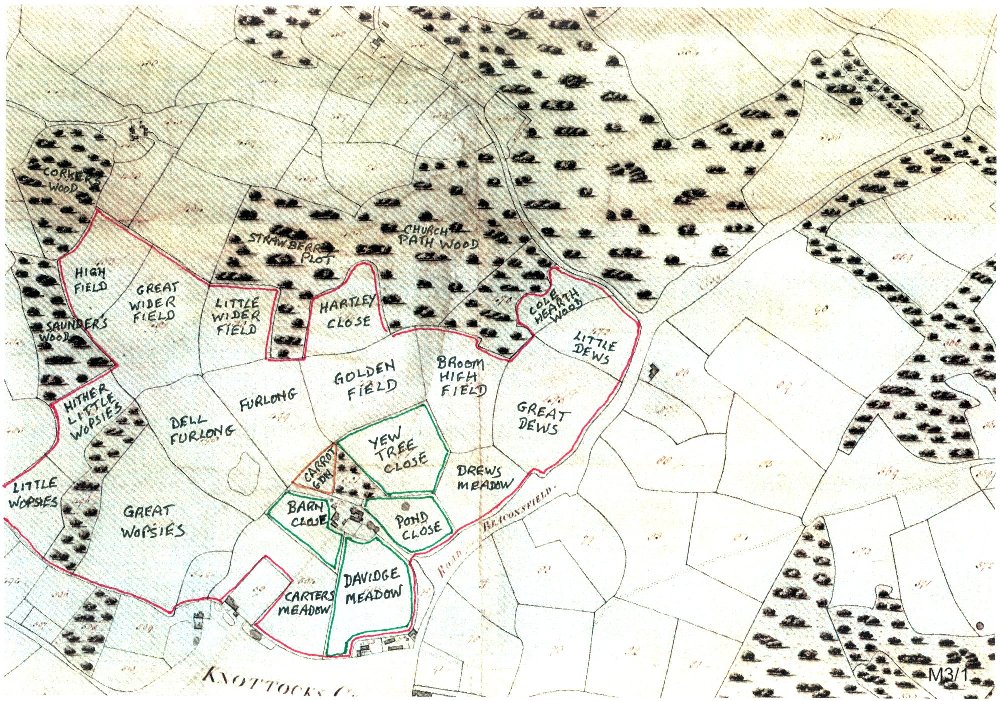The earliest easily available source for Penn field names is the 1838 Penn Tithe Map which is a detailed and pretty accurate map of all the field boundaries in the parish with an accompanying Award showing the name of the field, whether it was arable, pasture or meadow, who owned and who occupied it, and its size. Size was measured in acres, roods (1/4 acre) and perches (40 to a rood). Woods were not charged a tithe, but their size and name was recorded in the Award. You can compare with a modern map to discover old hedge lines.
 Click on image to enlarge to screen width
Click on image to enlarge to screen width
Then there is the fun of trying to decide why the field was so-called. There are field name dictionaries to help with this and common sense doesn’t always work. For instance, I thought ‘Wopses’ might mean ‘very large’, as in ‘what a whopper’, but according to John Field’s, English Field names, A Dictionary (1972), it derives from Old English wœps meaning ‘overgrown, scrubby’. Names can last for many centuries depending on stability of ownership and how much the name was used. Pond and road names are the strongest survivors, but many field names are centuries old.
The Tithe map extract shows the fields which used to belong to Baylins Farm, which is in Knotty Green, on the right as you drive into Beaconsfield from Penn with fields running up to Saucy Corner. Oliver Heal, the owner of the farm, has added the names of the fields which used to belong to the farm including several variants of ‘Wopses’. The fields grouped around the farm house, marked in green, are described by the Tithe Award as ‘meadow’. All the rest is arable. Over the years, some of the field boundaries have changed, but many have survived.
‘Drews Meadow’ and, I suspect mistakenly transcribed ‘Great Drews’ and ‘Little Drews’, were named after and perhaps once part of what is shown on the Penn 1852 Inclosure Award as Drews Green, a small common on both sides of the main road below Clay Street which you see now as a wide roadside verge on one side only. The name could be from an old personal name, Dru, Dreu or Drogo.
‘Cole Hearth Wood’ records one or more charcoal hearths – typically a circular level platform about 10m in diameter on which the hearth made of wooden faggots was built. Also look for dark soil and dust.
Miles Green and Oliver Heal, July 2022
